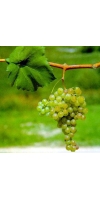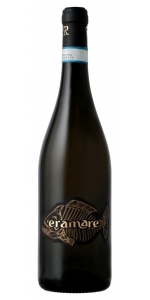Cortese

Cortese is an Italian wine grape variety used to create white wines. Earliest records of Cortese date to 1659 in Montaldeo and note that all vineyards were planted with the Cortese or Vermentino variety. Cortese was widely planted in the 1800s in Piedmont due to its ability to withstand disease and to produce high yields and good quality wine. Wines containing the Cortese variety are medium bodied wines with notes of lime and greengage. Some vines grown in cooler regions tend to produce very acidic flavors, but producers have found a way to mellow the tone of the wine with oak barrel fermentation. The taste of the Cortese white wine is said to be a signature Italian taste, with pleasing aromas and light flavor. The wines are typically higher priced due to the location of Piedmont, where the wines are produced. Growers, however, have planted Cortese in California, although the amount planted is quite small. Cortese is mostly linked with the Cortese di Gavi wine that is created in the area of Alessandria. The grape has a moderate level of acidity and a light flavor, and is paired well with seafood dishes. In restaurants in Genoa, the wine is paired with fresh seafood from the Lingurian coast. Cortese is also used to blend with the Bianco di Custoza.
Rinaldi Eramare Piemonte Cortese is 90% Cortese and 10% Sauvignon Blanc.
The Cortese grapes are coming from the Estate's vineyard located at the best exposures between Ricaldone and Maranzana at about 220 meters above sea level.
A salty and tasty white wine; fresh, simple and juicy.
After the alcoholic fermentation the wine refines on yeast for 4 months just to have a better color and taste.
A lot of minerality and notes of grapefruit.
Ideal for an aperitif, or with seafood appetizers, fish first courses, grilled fish, and vegetable pies.
- back
Selected Options
Grape Types
Categories
Pricing
Countries
Regions
Grape Types
Wineries
Organic/Free Shipping
Mordoree Chateauneuf du Pape Rouge Dame Voyageuse Grenache 90 % Mourvèdre 4% Syrah 4 % Counoise 1% Vaccarese 1% .
Mordoree Chateauneuf du Pape Rouge Dame Voyageuse is a more approachable version of the La Reine des Bois. It is meant to be enjoyable early compared to her sister Cuvée which is made for the long run.
Color : deep ruby red, opaque.
Aromas : red fruits, changing to touches of leather, black truffles and coffee.
Palate : fat, concentrated and full flavored with a very long liquoriced and fruity finish.
Ageing potential : 6 to 10 years.
Surface : 5 Ha.
Yield : 30 Hl./Ha.
Vineyard age: 60 Years
Terroir : Clay-siliceous on pebble stones
Harvest : by hand
Vinification : 100 % destemmed, long 30 days maceration with a maximum of 34° C temperature.
Estate bottled
Review:
"A fragrant and spicy Chateauneuf that marries richness and structure with finesse and fascination. The fine tannins build beautifully at the self-confidently dry finish, where spicy and chalky elements mingle beautifully, with just a hint of milk chocolate neatly accenting this. A complex blend based on grenache. From biodynamically grown grapes with Demeter certification. Drink or hold."
- James Suckling (August 2022), 94 pts
Murray Cabernet Sauvignon Red Mountain is made from 78% Cabernet Sauvignon, 10%, Merlot , 6% Malbec, 6%, Petit Verdot.
A beautiful ruby color, this wine is very fruity with lots of plum and just a hint of characteristic Red Mountain minerality. It is very smooth with a slight texture of tannin on the back. This wine is a real Cab crowd pleaser.
As much as possible, winemakers Tim and Kelly Hightower take a non-interventionist approach to winemaking. They place great emphasis on vineyard selection, picking, pressing, and blending so that Hightower wines are naturally beautiful and free from pretense. They let the powerful and concentrated fruit from Red Mountain speak for itself. The result is a collection of well-balanced, nuanced wines that reveal something new and interesting each time you open a bottle.
They age in the oak barrels until they are ready to bottle.Neutral Oak 52%, New Oak 48% (American 57%, Hungarian 15%, French 14%, European 14%).
After primary fermentation, all wines are pressed directly into 59 gallon oak barrels. Aging for 19 months.
Estate Vineyard 75%, Shaw Vineyard 21%, Red Willow 4%
Red Mountain AVA 100%





